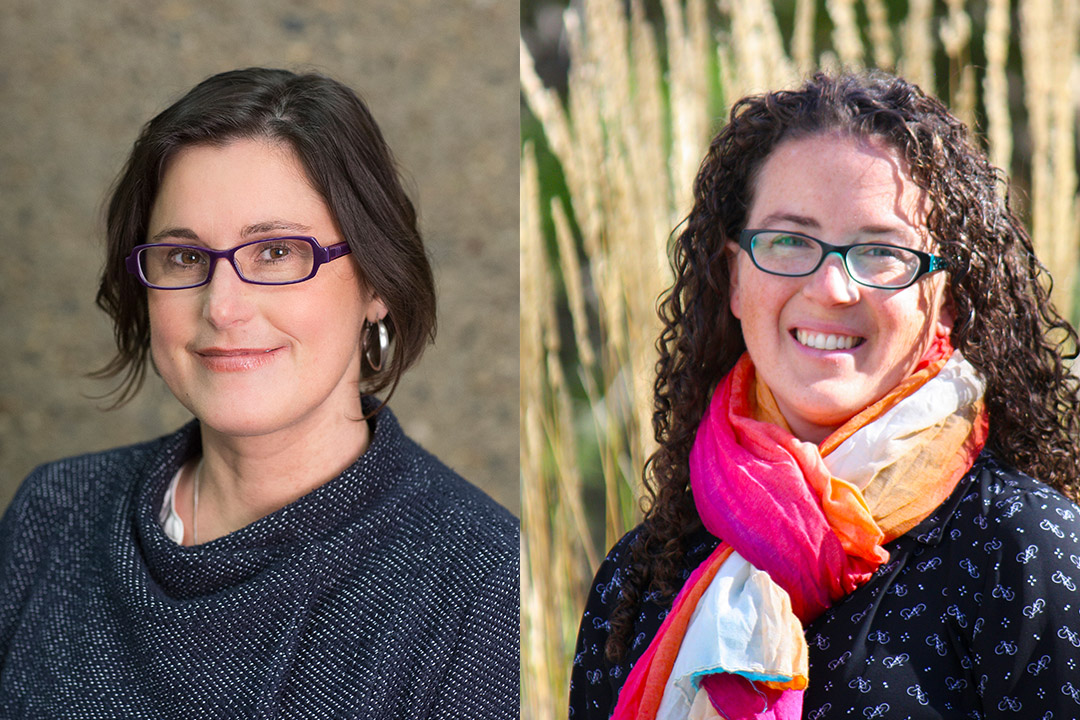
University and city study food reclamation
What if unwanted food from grocery stores and restaurants could be repurposed to not only save money, but potentially create jobs?
By Kristen McEwenThis is one of the potential interventions a University of Saskatchewan (USask)-led research team is studying as part of a food reclamation project, which could save 13,000 tonnes of food and save up to $138,000 in disposal fees at the City of Saskatoon landfill.
Dr. Rachel Engler-Stringer (PhD), an associate professor in the Department of Community Health and Epidemiology at USask, is co-leading the project with Katie Burns, the community leadership and program development manager at the City of Saskatoon, and the Saskatoon Food Council.
“There are interesting examples in other parts of the world, there have been creation of economic development and social enterprises that have repurposed food,” Engler-Stringer said.
Cities around the world have created social enterprises and organizations, which hire people to turn unwanted and “ugly” vegetables into food products like soups, jams or jellies that can be sold in grocery stores and delis, Engler-Stringer said.
Donating food to the local food bank or soup kitchen is still good, but it doesn’t address the underlying issue of poverty, she added.
“This is a way to potentially create an opportunity for good jobs in the community,” said Engler-Stringer.
Engler-Stringer’s project was one of five projects that received funding through the Research Junction Development Grant program, a jointly funded research partnership between the university and the city, which began in September 2019.
The idea for the food reclamation project started in 2016 when Engler-Stringer was working with then Master of Public Health student Sylvana Tu. Now it is part of the training for Master of Sustainable Environmental Management students Freda Atsunyo and Layane Fenandes de Sousa Moura. What began with creating and distributing information pamphlets about the rights and responsibilities of donor businesses in partnership with Population and Public Health in the Saskatchewan Health Authority, has grown into a partnership with the city.
“When the call for Research Junction proposals came out, it seemed like a good opportunity to work with the City of Saskatoon’s Sustainability Division as it works on an Industrial, Commercial, and Institutional (ICI) waste diversion strategy,” Engler-Stringer said.
The city’s team has a shared interest to create a strategy that will focus on reducing the amount of food that is wasted and goes to the landfill.
“The city has the target to divert 70 per cent of waste from our landfill,” Burns said. ”To help achieve this, businesses and organizations that generate food or yard waste as part of their operations will be required to have organics diversion in place by 2023.”
“This project will give businesses and organizations an additional option to comply with the new regulation, while at the same time helping to reduce their disposal costs and realizing social and economic benefits for our community,” she added.
The funding for this project was announced in February, a few weeks before COVID-19 arrived in the province. Though the pandemic has disrupted many aspects of life, USask is able to move forward with aspects of the food reclamation project.
The project is starting with environmental scans of existing food reclamation strategies in other cities and studying how food-based businesses in Saskatoon deal with surplus food.
“We’re starting to look at other cities and using their programs as examples for common practices that could be used in Saskatoon,” Engler-Stringer said.
The next step of the project is implementing strategies in Saskatoon, which may have to wait until work is no longer required to be completed remotely.
Engler-Stringer mentioned that they will continue to work on the environmental scan, as well as interviewing food business owners and management throughout the summer, until the practical side of the project can move forward.
“We’re still continuing, just in a slightly different order than initially planned,” she said.
Article re-posted on .
View original article.
